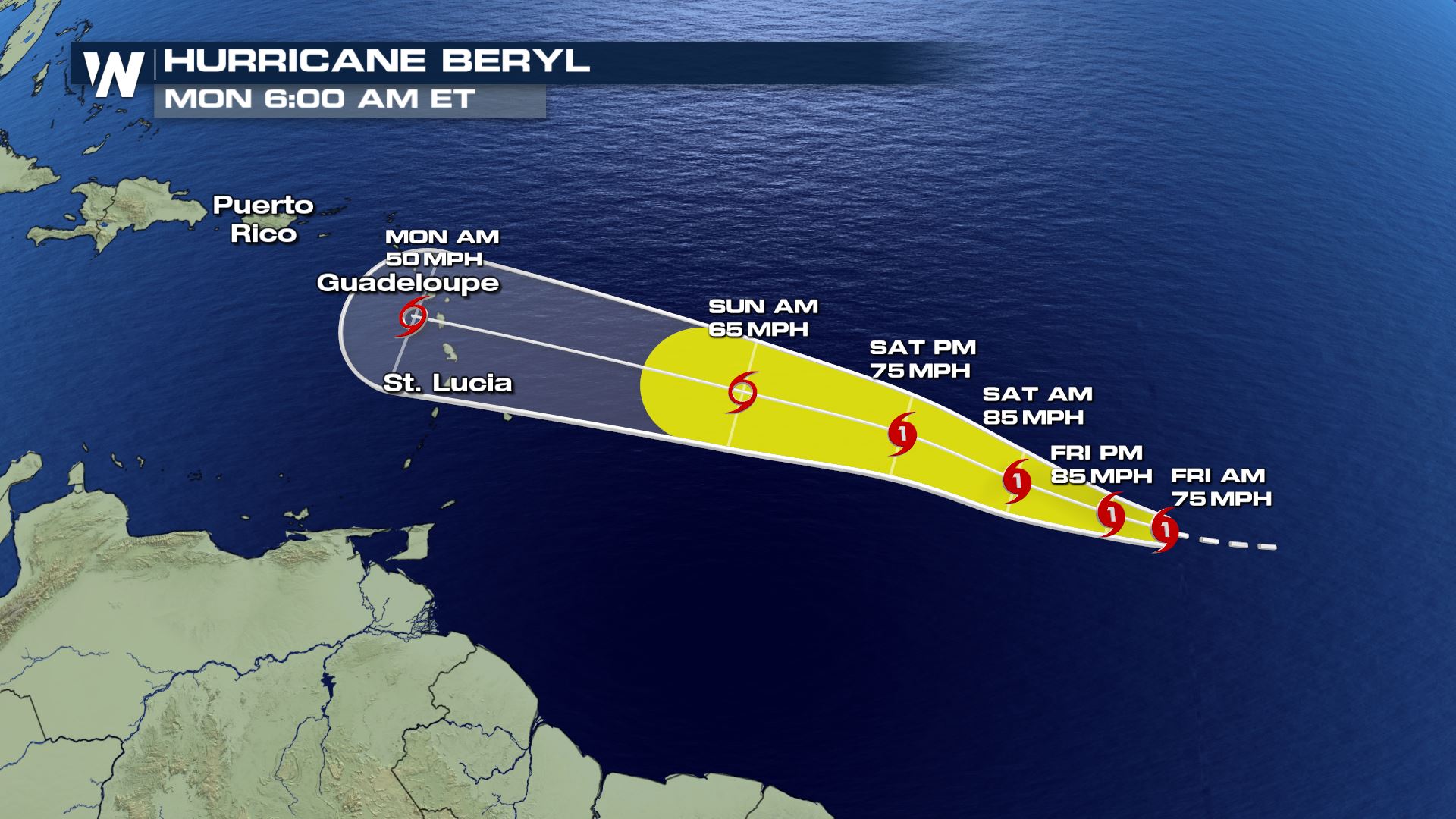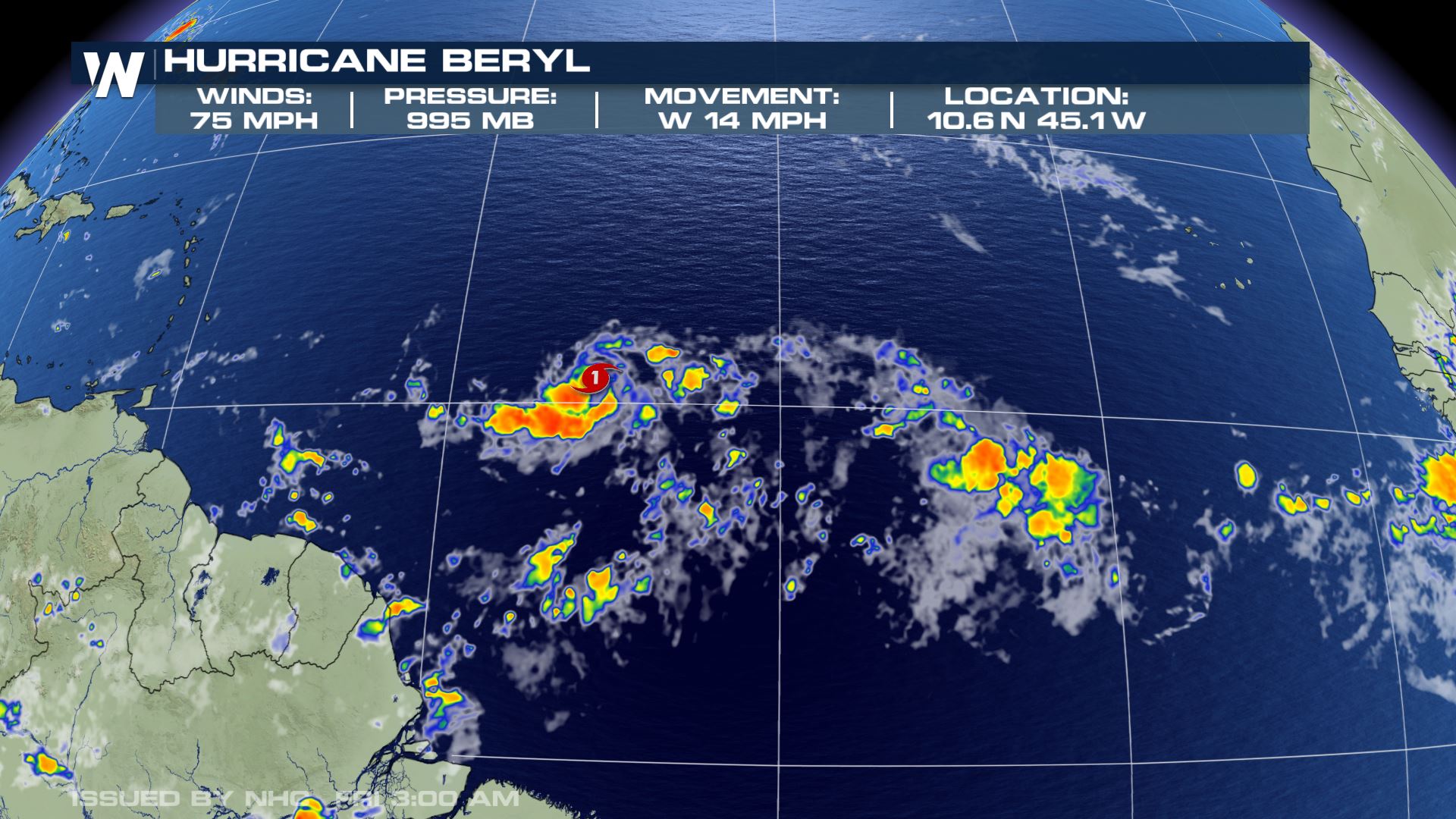Hurricane Beryl’s Projected Path and Intensity

Hurricane beryl forecast – Hurricane Beryl, currently classified as a Category 1 hurricane, is expected to intensify as it approaches the Lesser Antilles in the eastern Caribbean Sea. Based on the latest forecast track, the hurricane is anticipated to make landfall on the island of Dominica late Tuesday night or early Wednesday morning, with sustained winds of up to 90 mph.
Projected Path
After impacting Dominica, Hurricane Beryl is projected to continue its northwestward movement, passing near or over the islands of Guadeloupe, Montserrat, and St. Kitts and Nevis. The hurricane is then expected to weaken slightly as it approaches Puerto Rico, where it is anticipated to bring heavy rainfall and possible flooding.
Hurricane Beryl is expected to bring heavy rainfall and strong winds to Jamaica. For more information on the impact of Hurricane Beryl in Jamaica, please visit hurricane beryl jamaica. Stay tuned for updates on the hurricane’s forecast.
Intensity
The intensity of Hurricane Beryl is predicted to fluctuate as it moves through the Caribbean Sea. Upon making landfall on Dominica, the hurricane is expected to intensify to Category 2 strength, with wind speeds of up to 110 mph. As it progresses northwestward, Beryl is forecast to weaken to a Category 1 hurricane by the time it reaches Puerto Rico. However, the storm is still expected to produce significant rainfall and potential flooding risks.
Hurricane Beryl is expected to bring heavy rainfall and strong winds to the Windward Islands. The storm is forecast to pass through the region on Tuesday, bringing with it the potential for flooding and landslides. Residents are urged to take precautions and stay informed about the latest weather updates.
Storm Surge and Flooding
In addition to high winds, Hurricane Beryl is also expected to bring storm surge and flooding to the affected areas. Storm surge, a rise in sea level caused by the hurricane’s strong winds, is predicted to reach up to 6 feet along the coastlines of Dominica, Guadeloupe, and Puerto Rico. Heavy rainfall associated with the hurricane could also lead to flash flooding and landslides in mountainous areas.
Impacts on Affected Areas

Hurricane Beryl poses significant threats to coastal communities along its projected path. The hurricane’s strong winds, heavy rainfall, and storm surge can cause widespread damage to infrastructure, leading to power outages, transportation disruptions, and communication failures.
Infrastructure Damage
Hurricane Beryl’s high winds can topple power lines, causing widespread power outages. Additionally, heavy rainfall can lead to flooding, which can damage roads, bridges, and other critical infrastructure.
Economic Consequences
The economic impacts of Hurricane Beryl are expected to be substantial. Businesses may be forced to close temporarily, leading to lost revenue and productivity. Property damage can also be significant, particularly in coastal areas where homes and businesses are vulnerable to storm surge and flooding.
Environmental Impacts, Hurricane beryl forecast
Hurricane Beryl can have significant environmental impacts, including coastal erosion, wildlife disruption, and water contamination.
- Coastal Erosion: The storm surge and high waves associated with Hurricane Beryl can erode beaches and dunes, damaging coastal ecosystems and infrastructure.
- Wildlife Disruption: The hurricane’s strong winds and heavy rainfall can disrupt wildlife habitats, displacing animals and potentially causing harm or death.
- Water Contamination: Flooding from Hurricane Beryl can contaminate water sources with sewage and other pollutants, posing health risks to humans and wildlife.
Preparedness and Response Measures: Hurricane Beryl Forecast

Hurricanes can pose significant threats to communities in their path. Proper preparedness and response measures are crucial to minimize the impact and ensure public safety. This section Artikels the recommended actions for individuals and communities to take before, during, and after a hurricane, as well as the role of government agencies and emergency responders in coordinating response efforts.
Before a hurricane, individuals and communities should develop evacuation plans, prepare emergency kits, and establish communication strategies. Evacuation plans should include designated safe havens and evacuation routes. Emergency kits should contain essential supplies such as food, water, first-aid kits, and medications. Communication strategies should ensure that individuals can stay informed about the hurricane’s progress and receive updates from authorities.
Role of Government Agencies and Emergency Responders
Government agencies and emergency responders play a critical role in coordinating response efforts during a hurricane. They provide aid, ensure public safety, and support affected communities. Government agencies, such as the National Hurricane Center, issue hurricane warnings and advisories, providing vital information to the public. Emergency responders, such as police, fire, and medical personnel, are deployed to affected areas to assist with evacuations, search and rescue operations, and damage assessment.
Available Resources and Support Systems
Numerous resources and support systems are available to assist affected communities after a hurricane. Shelters provide temporary housing for those who have lost their homes. Food assistance programs distribute meals and supplies to those in need. Mental health services are also available to help individuals cope with the emotional trauma caused by the hurricane.